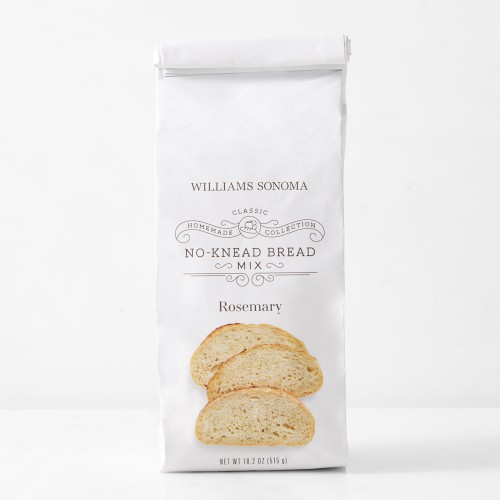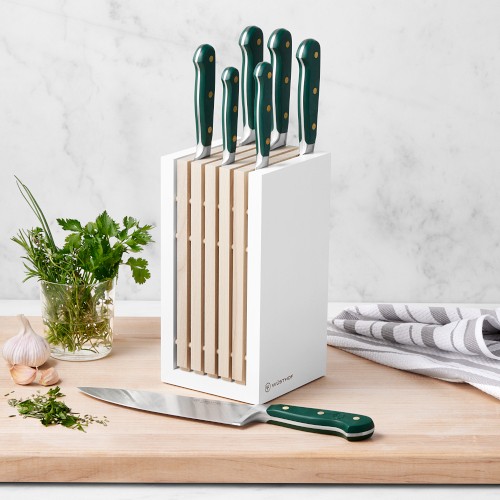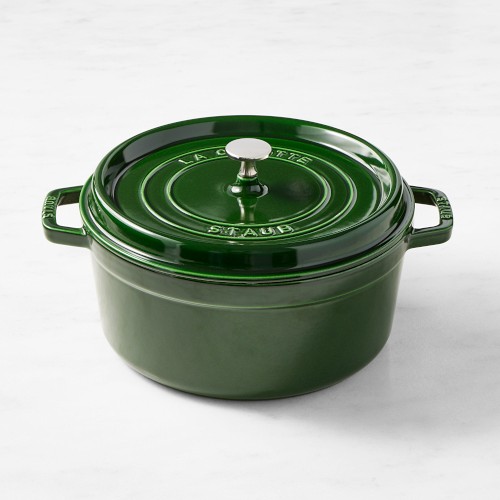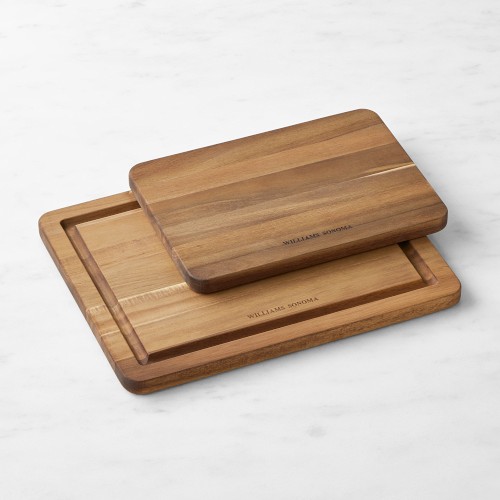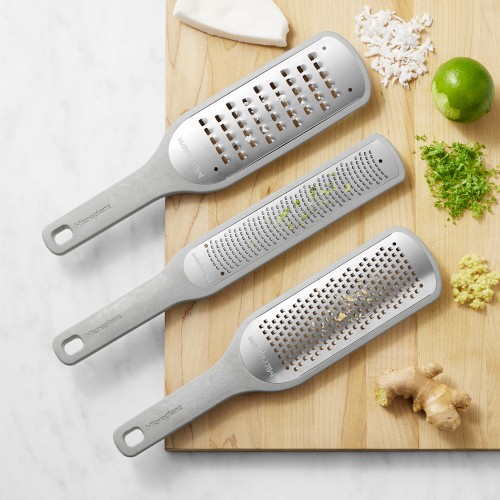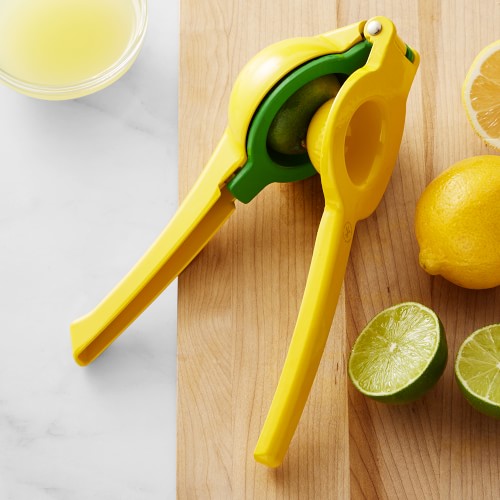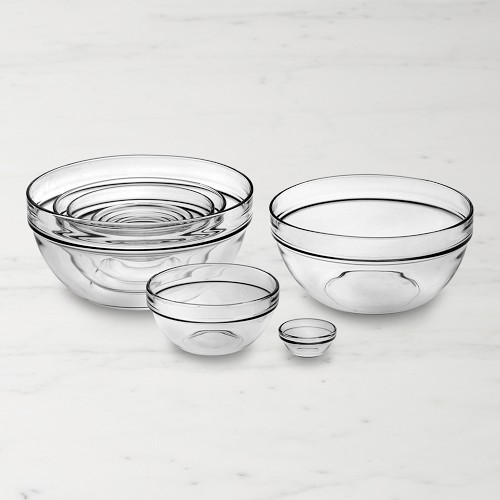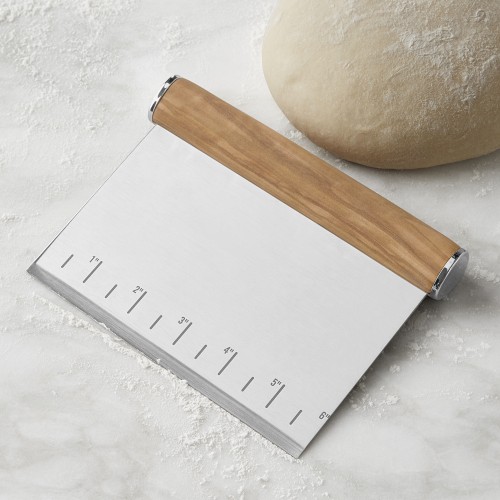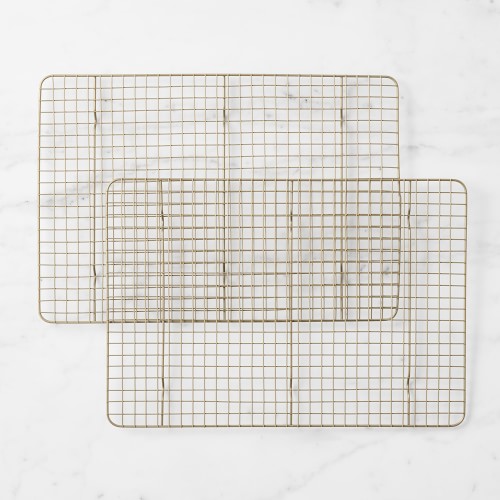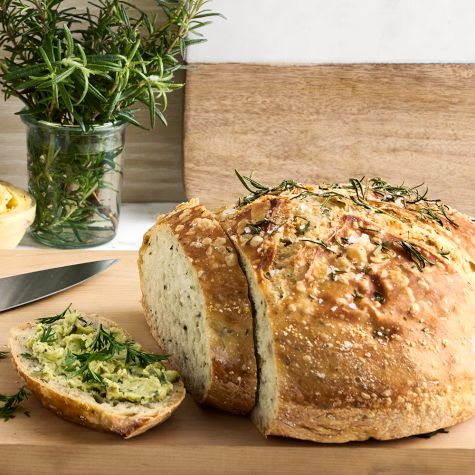
No-Knead Rosemary Bread with Compound Butters
Prepared with our exclusive no-knead mix, this fragrant rosemary bread is like a blank canvas, ready to be slathered with whatever compound butter you like. Compound butter is a blend of unsalted butter and other flavorful ingredients, such as fresh herbs, spices, garlic or cheese. Here we’ve suggested three combinations, but feel free to experiment with your own favorite add-ins. The options are endless! For easy mixing, bring the butter to room temperature before stirring in the remaining ingredients. The compound butters can be made up to 3 weeks in advance and refrigerated, so you’ll have some on hand to enhance your next loaf. Enjoy alongside soups or salads or as a tasty snack.
Ingredients:
For the bread:
- 1 package Williams Sonoma Rosemary No-Knead Bread Mix
- 1 package yeast (included with mix)
- 1 1/2 cups plus 2 Tbs. (13 fl. oz./405 ml) warm room-temperature water (about 70°F/21°C)
- All-purpose flour for dusting
- Cornmeal for dusting
For the lemon, garlic and rosemary butter:
- 8 Tbs. (1 stick) (4 oz./125 g) unsalted butter, at room temperature
- 1 Tbs. minced fresh rosemary
- Zest of 1 lemon
- 1 tsp. fresh lemon juice
- 2 garlic cloves, minced
- 1/2 tsp. kosher salt
For the miso-Parmesan butter:
- 8 Tbs. (1 stick) (4 oz./125 g) unsalted butter, at room temperature
- 2 Tbs. grated Parmesan cheese
- 1 1/2 Tbs. white miso paste
- 1 Tbs. minced fresh chives
- Freshly ground pepper
For the salted orange and date butter:
- 8 Tbs. (1 stick) (4 oz./125 g) unsalted butter, at room temperature
- Zest of 1 orange
- 1/2 tsp. kosher salt
- 4 Medjool dates, pitted and chopped
Directions:
To prepare the bread, in a large bowl, stir together the bread mix and 1/4 tsp. of the yeast (you may not use all the yeast in the package). Add the water and mix until thoroughly combined and no dry mix remains. Cover the bowl with plastic wrap and let the dough rest at warm room temperature (about 70°F/21°C) until the surface is dotted with bubbles, 12 to 16 hours.
Turn the dough out onto a lightly floured work surface. Sprinkle the dough with a little flour. Gently pull the side that is closest to you outward and fold it into the center of the dough. Gently pull the right and left sides outward and fold them over the center of the dough. Lastly, gently pull the top side and fold it over the previous folds. Gently pinch the folds together. Turn the dough over, so the seam side is down, and lightly dust the top with flour. Cover loosely with plastic wrap and let the dough rest for 15 minutes.
Using a lightly floured bench scraper or your hands, form the dough into a taut round. Generously coat a cotton towel (preferably a flour sack towel, not terry cloth) with cornmeal. Place the dough, seam side down, on the towel and lightly dust the top with more flour or cornmeal. Cover with another cotton towel. Set aside at room temperature until the dough is more than doubled in size and does not readily spring back when poked with a finger, about 2 hours.
At least 30 minutes before the dough is ready, position a rack in the center of the oven. Put a 4- to 6-qt. (4- to 6-l) Dutch oven or a 1.75- to 3.2-qt. (1.75- to 3.2-l) bread oven in the oven and preheat to 450°F (230°C).
Carefully remove the pot from the oven. Slide a bench scraper under the bread and using your opposite hand to cradle the dough, gently drop it, seam side down, into the pot. Shake the pot once or twice; if the dough is unevenly distributed, it will straighten out as it bakes. Using a bread lame or a very sharp paring knife, score the top of the dough with three parallel slits or an “X.”
Cover the pot with the lid and bake for 30 minutes. Uncover and continue baking until the crust is a rich golden brown, 15 to 20 minutes more.
Transfer the pot to a wire rack and let the bread cool for 10 minutes. Using oven mitts, turn the pot on its side and gently turn the bread out onto the rack; it will release easily. Let the bread cool for 15 to 30 minutes more.
To prepare each compound butter, in a bowl, combine the butter with the remaining ingredients listed and stir to combine. Serve right away or transfer the butter to a sheet of plastic wrap, fold it over the butter and form into a log. Refrigerate until firm, about 2 hours; the butter can be stored for up to 3 weeks.
Serve the bread with the compound butter of your choice. Serves 8 to 10.
Williams Sonoma Test Kitchen














